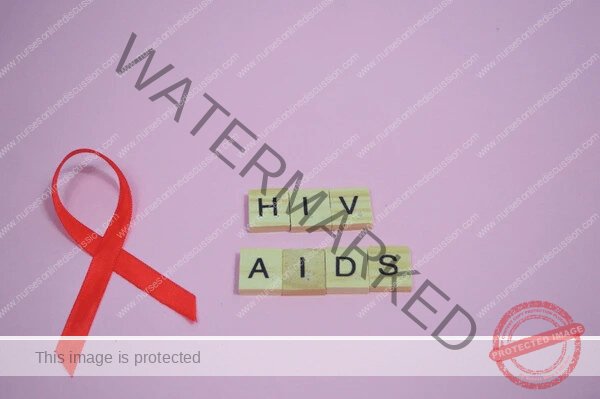paediatrics
Subtopic:
HIV/AIDS in Children

Human Immunodeficiency Virus (HIV)
This is a virus that targets and weakens the body’s immune system, specifically CD4+ T cells, which are crucial for fighting off infections. Over time, this damage makes the body vulnerable to various illnesses.
Acquired Immunodeficiency Syndrome (AIDS)
This is the most advanced stage of HIV infection. It is diagnosed when the immune system is severely compromised, indicated by a very low CD4+ cell count or the development of specific opportunistic infections or HIV-related cancers.
Modes of Transmission
Mother-to-child transmission (MTCT) / Vertical Transmission: The primary way individuals acquire HIV.
In utero: During pregnancy, the virus can cross the placenta from mother to fetus.
Intrapartum: During labor and delivery, through exposure to maternal blood and bodily fluids.
Postpartum: Through breastfeeding, as HIV can be present in breast milk.
Horizontal Transmission: Less common in young individuals but can occur through:
Sexual contact.
Exposure to infected blood or blood products (e.g., contaminated needles, unscreened transfusions).
Clinical Manifestations / Signs and Symptoms
Symptoms are often non-specific and can vary greatly. Some individuals may remain asymptomatic for a prolonged period. Common signs include:
Failure to thrive (poor weight gain, slow growth).
Recurrent or persistent infections:
Oral thrush (candidiasis).
Pneumonia (especially Pneumocystis jirovecii pneumonia – PCP).
Chronic or recurrent diarrhea.
Frequent ear infections (otitis media).
Skin rashes or infections.
Generalized lymphadenopathy (swollen lymph nodes).
Hepatosplenomegaly (enlarged liver and spleen).
Developmental delays (motor or cognitive).
Persistent fevers.
Chronic cough or lung problems.
Neurological abnormalities.
Diagnosis
Virological Tests (for individuals <18 months): These detect the virus itself (RNA or DNA) as maternal HIV antibodies can persist, making antibody tests unreliable in this age group.
HIV DNA Polymerase Chain Reaction (PCR).
HIV RNA Polymerase Chain Reaction (PCR).
Antibody Tests (for individuals >18 months): These detect antibodies produced by the body in response to HIV. Positive results require confirmatory testing.
Examples: ELISA, rapid HIV tests, Western Blot (confirmatory).
Early Infant Diagnosis (EID) using virological tests is critical for infants born to HIV-infected mothers, usually starting at 4-6 weeks of age.
Management
The goals are to suppress viral replication, restore/preserve immune function, reduce HIV-related illness and death, and improve quality of life.
Antiretroviral Therapy (ART): This involves using a combination of at least three antiretroviral drugs. Lifelong adherence is crucial. Formulations (e.g., liquids, dispersible tablets) are chosen based on age and ability to swallow.
Monitoring: Regular assessment of:
CD4+ cell count (measures immune status).
HIV viral load (measures the amount of virus in the blood, indicating treatment effectiveness).
Growth and development.
Side effects of medications.
Screening for opportunistic infections.
Nutritional Support: Essential for growth, immune function, and medication tolerance.
Immunizations: Standard immunizations are vital, though live vaccines may be contraindicated in severely immunocompromised individuals.
Prevention of Mother-to-Child Transmission (PMTCT)
A set of interventions to reduce the risk of HIV transmission from an infected mother to her infant.
HIV testing for all pregnant women.
Antiretroviral therapy for the pregnant woman throughout pregnancy, labor, and delivery, and continued during breastfeeding.
Antiretroviral prophylaxis for the newborn infant for a defined period (typically 4-6 weeks, or longer if breastfeeding).
Counseling on safer infant feeding options (e.g., exclusive breastfeeding with maternal ART and infant prophylaxis, or exclusive formula feeding where appropriate and sustainable).
Safer obstetric practices.
Opportunistic Infections (OIs)
Infections that occur more frequently or are more severe in individuals with weakened immune systems.
Common examples: Pneumocystis jirovecii pneumonia (PCP), tuberculosis (TB), severe or persistent candidiasis, cytomegalovirus (CMV), Mycobacterium avium complex (MAC).
Prophylactic medications are often given to prevent certain OIs (e.g., co-trimoxazole for PCP).
Treatment of OIs is specific to the pathogen, alongside ART to improve immune function.
Impact on Growth and Development
HIV can negatively affect physical growth and neurodevelopmental outcomes.
Growth: Stunting, wasting, and failure to thrive are common if HIV is untreated or poorly controlled.
Neurodevelopment: HIV can directly impact the brain or indirectly affect development through chronic illness, malnutrition, or social factors, potentially leading to cognitive, motor, or language delays. Early ART can mitigate some of these effects.
Psychosocial Considerations
Living with or being affected by HIV involves numerous psychosocial aspects.
Disclosure: The process of informing an individual about their HIV status.
Stigma and Discrimination: Can impact social interactions, mental well-being, and access to care.
Adherence Challenges: Maintaining long-term adherence to ART can be difficult.
Mental Health: Increased risk for anxiety, depression, and other mental health concerns.
Support Systems: The need for strong family, school, and community support.
Transition to Adult Care: Planning for the move from adolescent-focused to adult-focused health services.
Related Topics
- Common health problems during childhood
- Nature and Causes of Childhood Diseases
- Respiratory System Diseases
- Gastrointestinal Tract Conditions
- Cardiovascular System Diseases and Conditions
- Central Nervous System Diseases
- Genitourinary Tract Diseases and Conditions
- Endemic and Epidemic Diseases
- Tumors in Children
- Eye and Ear Conditions
- HIV/AIDS in Children
- Integrated Management of Childhood Illnesses (IMCI)
- Surgical Conditions in Children
- Congenital Malformations in Children
- Fractures
- Burns
- Surgical Conditions of the Gastrointestinal Tract
- Provide first aid management of various accidents in children
- Admit children involved in accidents
- Educating Mothers on Accident Prevention in Children
Get in Touch
(+256) 790 036 252
(+256) 748 324 644
Info@nursesonlinediscussion.com
Kampala ,Uganda
© 2025 Nurses online discussion. All Rights Reserved Design & Developed by Opensigma.co

